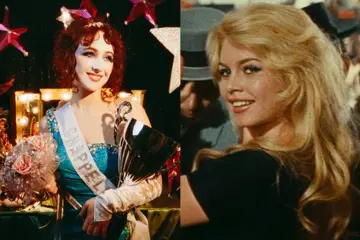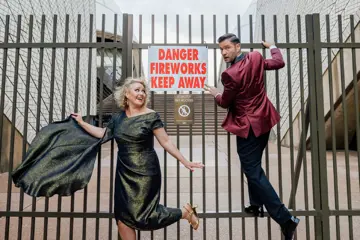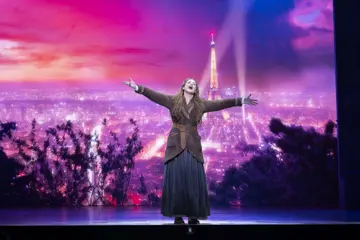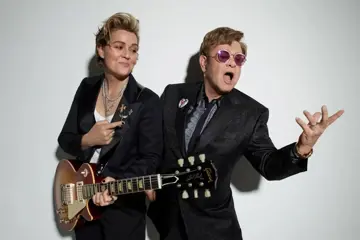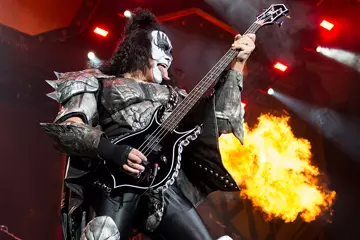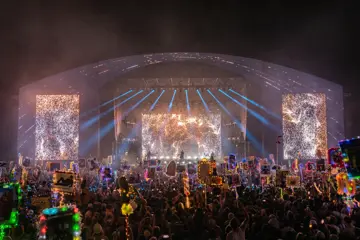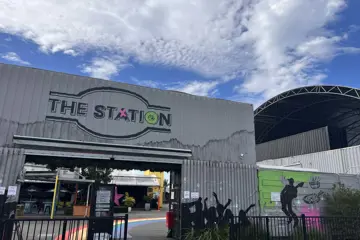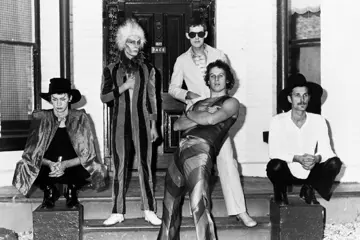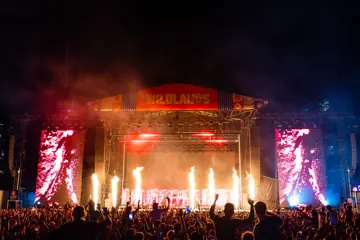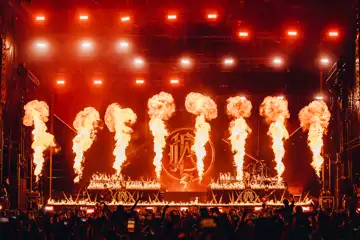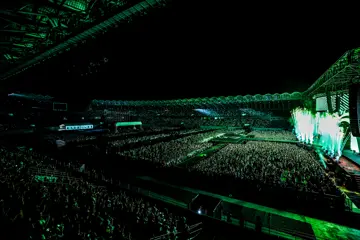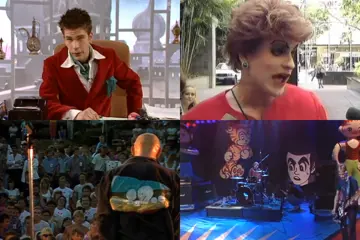The live music sectors in Australia and globally are not only back to volting and declaring 2023 to be one of their strongest in years, but they’re breaking records everywhere. The live sector is tipped to reach US$9.5 billion (AU$14.8 billion) by end of this year, and $10.5 billion ($16.1 billion) by 2027.
Two new US reports – from Bank Of America and the United Talent Agency / UTA IQ – are pinpointing how social media is playing a huge role in this tailwind, boosting global awareness, fan growth, discovery through recommendations and consumer obsession and competition.
Promoters and venues are increasingly using social media influencers to sell tickets. After all, 72 percent of Gen Z (aged 11 to 26) and Millennials (27 to 42) rely on influencers to help make consumer decisions, and TikTok is the third most important platform to reach younger females.
“It’s that important badge in [a fan’s] life to make sure that they can tell people they were at the Beyoncé show,” Live Nation CEO Michael Rapino said at a conference in New York. “Artists and what they’re able to drive with that relationship, with that fan, [through live music] is just a bond that we’ve never seen before – especially with social media.”
Don't miss a beat with our FREE daily newsletter
Added Geoff Jones, Sydney-based head of promoter TEG, to TheMusic.com.au, “The demand is seeing the superstars and mid-range acts upgrading to larger venues. As for new acts, the way they are gaining traction digitally is really interesting. They’re finding their audiences.”
A note to the financial market from an analyst from Bank of America, one of the Big Four banking institutions in the US, predicted social media would play a greater role in live events.
“The live entertainment industry has been one of the most robust growth engines of the music industry over the past 20+ years,” reported analyst Jessica Reif Ehrlich. “Not surprisingly, we believe talent, especially artists that command huge fan bases, will be able to increasingly extract incremental value out of the ecosystem (largely driven by increasing supply and ticket pricing), while venues, which have several independent revenue streams, accrue the most value.”
Going Boom
Last week, the world’s largest promoter, Live Nation, revealed in its 2023 third quarter financial report it was its “strongest quarter ever”, and 2023 looked like being a record year. Its revenue of $8.15 billion ($28.4 billion) was $1.16 billion ($1.78 billion) more than expected, sales of 140 million tickets for Live Nation shows were 17 percent more than last year, and its ticketing agency Ticketmaster was on track to manage 600 million tickets this year.
Recent financial reports from Australian stadium operators showed they have been setting record attendances these past two years. Stadiums Queensland’s nine venues, for instance, drew a record 4.9 million patrons through the 2022/23 financial year across 178 major music, entertainment and sporting events.
Chairperson Cathy McGuane said, “The last 12 months … have been busy with events now that the state is finally fully open for the first me in three years”, adding that the nine venues “contributed $1.1 billion to the Queensland economy.”
Brisbane Entertainment Centre drew 550,000 and 43 Main Arena performances, Heritage Bank Stadium hosted a record 49,957 crowd at Harry Styles’ only Queensland concert, and Suncorp Stadium hosted three back-to-back Ed Sheeran concerts, breaking the venue crowd record with 173,387 fans across three nights.
In Western Australia, VenuesWest delivered its most successful financial year yet, setting new attendance records after drawing six million patrons in 2022-23 to 194 music and sports events to its 14 venues. This was 92,478 above the previous record set in pre-COVID years. The Ed Sheeran concert set a new attendance record for both Optus Stadium and Western Australian venues, with over 73,000 fans.
The Melbourne and Olympic Parks precinct had a record year, doubling its attendance to 3 million fans to 400 events in the last financial year. Billie Eilish, Elton John and Rod Stewart were its biggest music attractions to its six venues, which includes Rod Laver Arena, Margaret Court Arena, John Cain Arena and AAMI Park. Three of these ranked among the Top 10 busiest in Australia and New Zealand.
The Melbourne Cricket Ground had “a massive year” according to CEO Stuart Fox, setting a new all-time attendance record for concerts when Ed Sheeran drew 215,000 fans over two Mathematics shows. Marvel Stadium had 114,829 fans at Styles’ two shows, while 100,656 attended the Red Hot Chili Peppers and Post Malone dates.
Other Factors
It’s not just social media, of course. There are other factors causing this live music explosion. Production costs may have gone up, but Australian and international promoters have made sure that ticket prices are kept in check.
Concerts and festivals are no longer prone to cancellations, and consumers are confident in buying tickets. In the wake of COVID, younger audiences in particular are “revenge spending”, diverting their cash on experiences and services – with concerts as priorities – than products.
Also important is that promoters are marketing sharper, especially in the way they stop grouping Gen Z and Millennial fans together as digital natives. The two age groups have their own language and humour, but prone of all music age groups to social media influencers.
Australian promoters admit they are no longer just interested in the size of their social media followers. They’re digging deeper to find out how much of their content is shared and saved, how much of their video footage is being watched, and the sentiment and numbers in comments.
Behaviour Changes
The report from the UTA IQ, Standing Room Only: Live Music’s Epic Resurgence, studies changes in the behaviour of American live music fans. But it gives a strong indication of how social media has changed the spend and attitudes of their Australian counterparts. They are attending more concerts and festivals, and spending more on tickets and VIP experiences, with 34 percent admitting concerts and festivals are more important since COVID. 79 percent saw the same act more than once within a 12 month period.
Punters are increasingly willing to travel – not only to US cities (two in five, or 39 percent of them) but internationally as well (30 percent, with 47 percent planning to do so) – to get their live fix. The figure is higher for Millennials, the biggest live music fans and most fuelling the boom. 54 percent have flown to other US cities, while 46 percent went abroad. 67 percent say they will travel internationally for a concert and 59 percent for a festival.
Millennials attended 36 percent more concerts and 32 percent more festivals over the last 12 months than they did before COVID. 52 percent shelled out for a VIP ticket, with 45 percent more partial to VIP experiences than they did pre-pandemic.
“Music lovers have ushered in a new golden era of concerts and festivals,” said Joe Kessler, head of UTA IQ. “In a world in which our lives are becoming increasingly virtual, fans are craving distinctive, in-person, communal experiences – and live music clearly is filling that need.”

